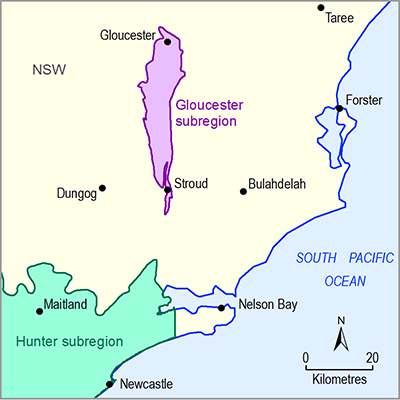Summary
Section 2.6.1 .6 summarises prediction results of impacts on eight hydrological response variables caused by additional coal resource development. The impacts on each receptor were generated from 10,000 replicates of the model runs using randomly selected parameter sets.
The prediction results show that the additional coal resource development in the Gloucester subregion has more noticeable impacts on hydrological response variables in receptors in the northern part of the subregion than those in the southern part. They are particularly apparent in streamflows along the Avon River, a tributary of the Gloucester River, and where two of the three coal mines and most of the coal seam gas (CSG) field are located. Despite there being one coal mine with an additional coal resource development footprint in the Karuah river basin, there is comparatively little hydrological impact on any response variables in the southern part of the subregion.
The comparison among the 30 receptors shows that the relative hydrological changes are larger for the receptors where the maximum additional coal resource development percentage is larger. For every hydrological response variable, the biggest impacts are predicted to occur at node 14 on the Avon River. This node is located downstream of the expansions to the Stratford Mining Complex and within the proposed Gloucester CSG field.
The impacts due to the additional coal resource development on the low-streamflow hydrological response variables do not appear to be more noticeable than those on the high-streamflow hydrological response variables. However, the uncertainty in the predicted change and the timing of the maximum change are greater for the low-flow variables.
These results suggest that changes to low-flow characteristics are caused by a combination of the instantaneous impact of interception from the additional mine footprints and the cumulative impact on baseflow over time caused by watertable drawdown, while the changes to high-flow characteristics are dominated by direct interception of runoff.

